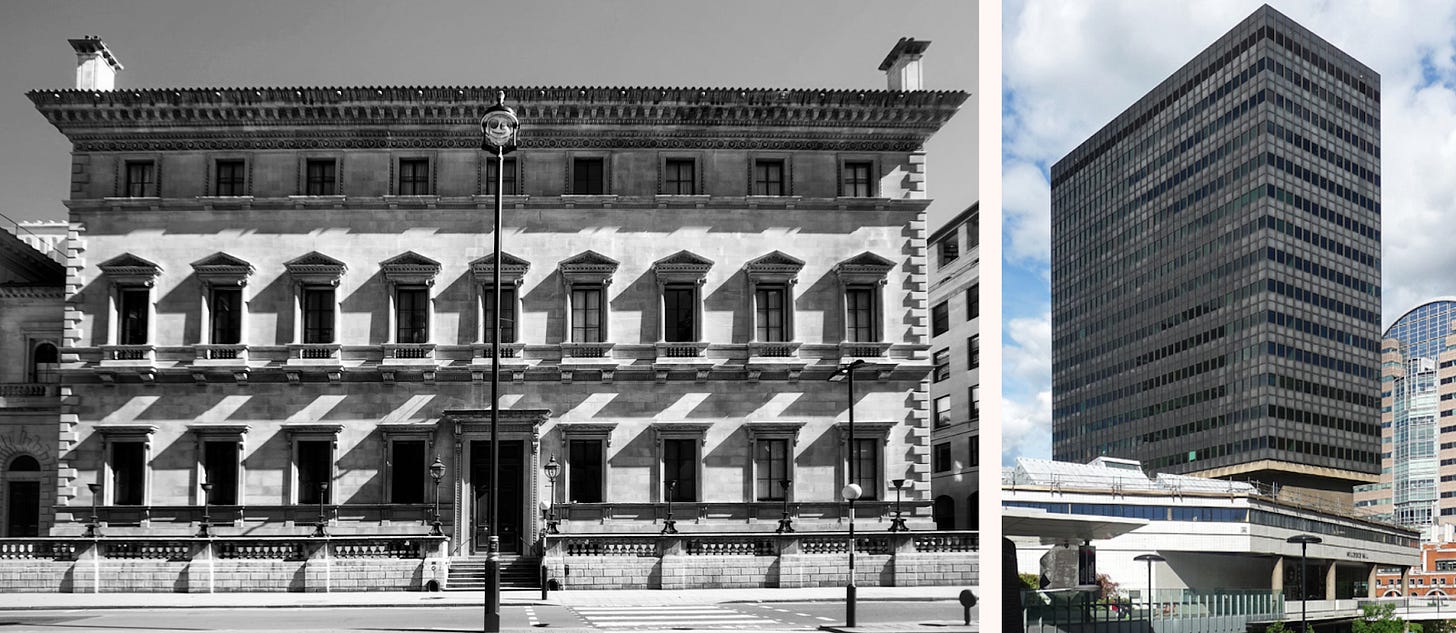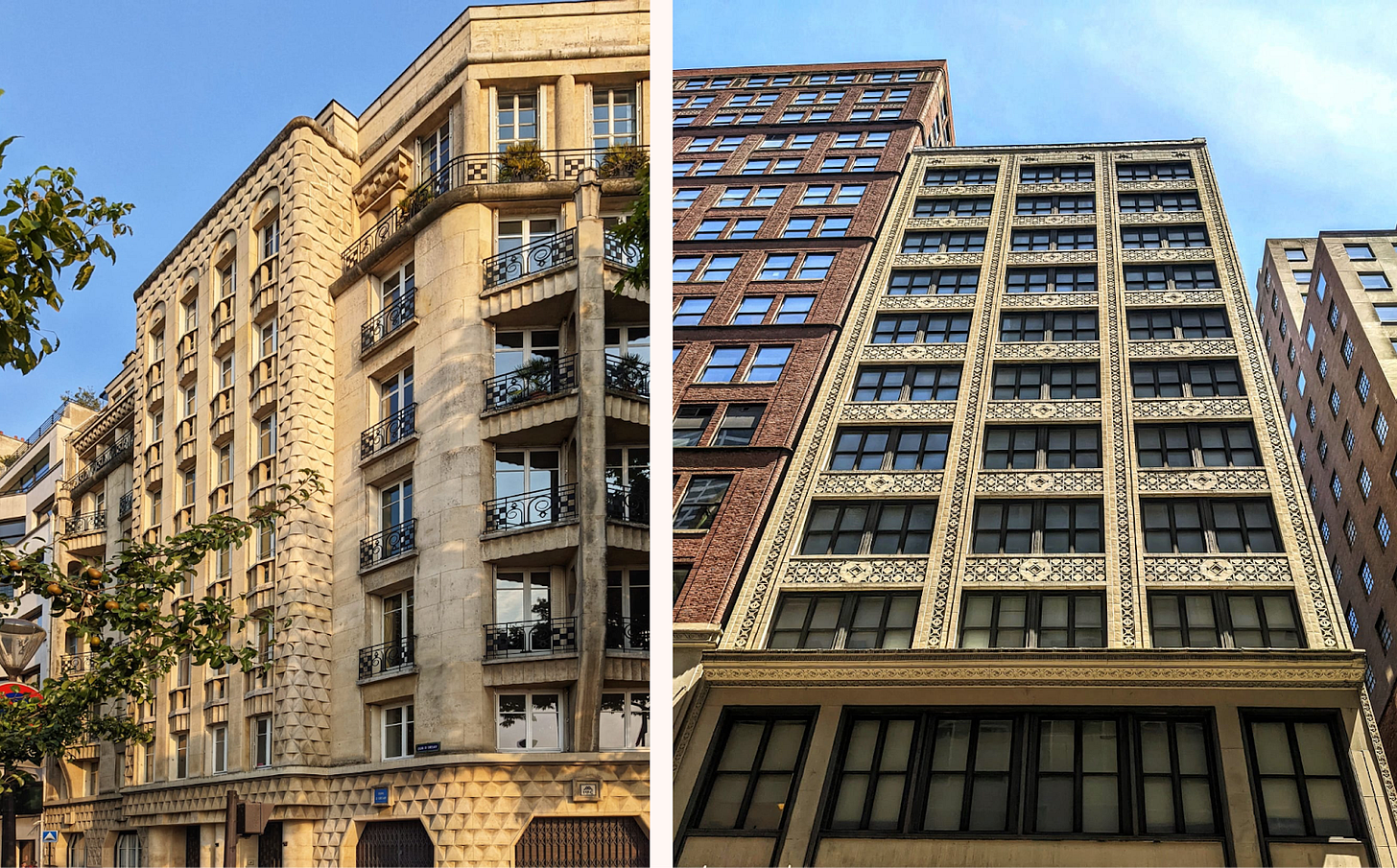From the vault: Making architecture easy
Architecture is inherently public, which means buildings should be agreeable, not unpopular works of genius
Samuel Hughes writes about helping make architecture easy to like for Issue 12. Read it on our website here.
Since at least the nineteenth century, debate has intermittently flared up around the question of what styles of architecture we should build. In recent decades the two sides have often been characterised as ‘traditionalists’ and ‘modernists’, supporting the use of traditional and modernist architectural styles respectively.
To some people, this framing feels strange. These people have the impression that we used to make fewer ugly buildings and dysfunctional places. They don’t accept the idea that technological modernity somehow morally requires us to build in an austere ‘modernist’ style. But they also find it bizarre to be dogmatically in favour of the use of old architectural styles rather than new ones. People in this group feel that the debate has gone wrong somewhere. They are ideologically homeless: they are obviously not ‘modernists’, but they are also uneasy with the ‘traditionalist’ label. I count myself in this category, and I think quite a few other people fall into it too.
I believe that the ‘traditionalist’ framing is indeed a mistake, and that there is no reason to favour traditional styles per se. But there are important reasons why we should favour some architectural styles over others – reasons that are special to architecture, and that set it apart from music, literature, painting or film. Architecture is a public art, a vernacular art, and a background art: it is created by a huge range of people, and experienced involuntarily by an even wider one. This means that we need architectural styles that are as accessible as possible, to the full range of people who live with what we build, and to the full range of builders who create it. Some ‘traditional’ styles might well be useful in achieving this, but it is not their being traditional that matters: any style with broad and deep appeal will do just as well.
1. The curious idea of ‘traditionalism’
People who are uneasy with a lot of modern buildings are sometimes attracted to the idea of ‘traditionalism’. But on reflection, ‘traditionalism’ is quite a strange idea. I don’t identify as a ‘traditionalist’, and I don’t think other people should either. Here is why.
First, the term itself is misleading. A natural definition of ‘traditionalism’ is a view on which we should build in a traditional way. But on any plausible definition of a ‘traditional style’, ‘modernism’ has itself become a tradition. It has pioneers, paragons and imitators; it has purists, popularisers and schismatics; it admits of allusion, pastiche and reinvention. All the cities of the world now teem with office buildings that are variations on the Seagram Building in New York City. It is unclear what makes them less ‘traditional’ than the variations on the Palazzo Farnese that filled many of the cities of the nineteenth century. To be sure, modernism began with a period of rapid, relatively discontinuous, and often consciously revolutionary change. But so have other traditions, including in some respects the Gothic and the Renaissance.

What the traditionalists need is some way of distinguishing the traditions they like from the traditions they don’t. One possibility is to go for age: traditionalists could rebrand as ‘oldists’, who favour the use of old styles rather than new ones. Defining ‘old’ is tricky – we would need to go back to at least 1920 to exclude the Modern Movement pioneers, but by doing so we would exclude Art Deco, Brick Expressionism, and so on. Let us suppose, however, that with a bit of fiddling we can get to a definition that does a tolerable job at sorting the styles that traditionalists like from the ones they don’t. Even so, ‘oldism’ would seem like a very strange view. Surely a style’s being old per se is not the thing that matters? If a new style were invented that had all the merits of the old styles (whatever you think they are), and that enjoyed their broad and deep popularity, surely any sensible traditionalist should be in favour of it?

What ‘traditionalists’ really want to say, in my view, is that old architectural styles tend to have some characteristic that tends to be lacking in ‘modernism’. What they really support are styles with this characteristic: this may correlate with age for the time being, but it is perfectly possible that a new style could be invented in which this characteristic is abundantly present. The question of course is what this characteristic is.
The most obvious answer might seem to be that it is simply ‘goodness’. We thus arrive at ‘goodism’, according to which we should favour styles conducive to good architecture, and disfavour styles conducive to bad. It might seem that goodism is obviously true to the point of being a trivial claim. Curiously enough, however, I am going to argue against it. There are many contexts in life in which we should be goodists. But when it comes to architecture, we should often care about other things more than the sheer goodness of the work.
You can read the rest of the piece here.
